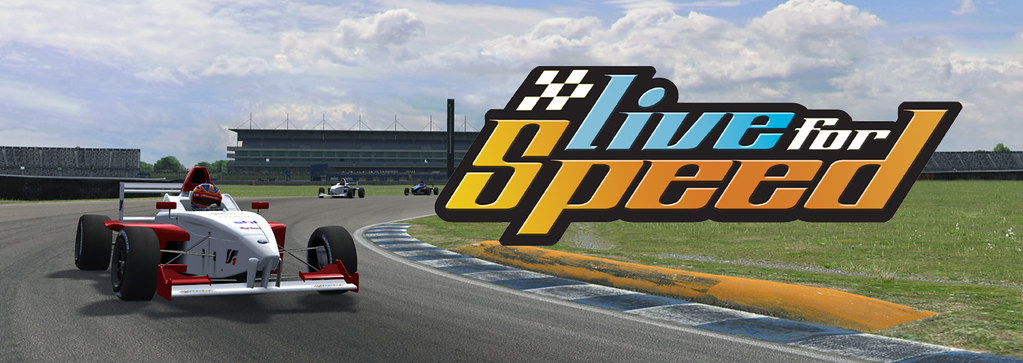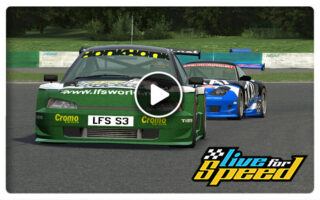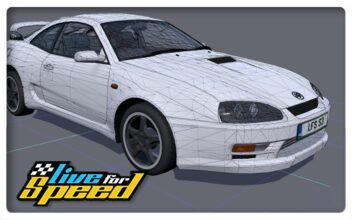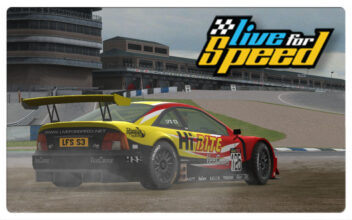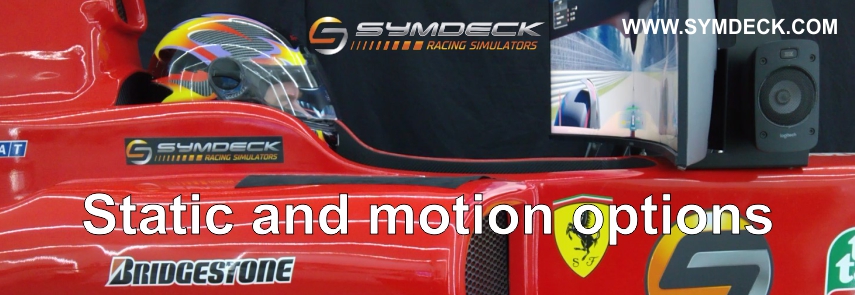Exactly 20 years ago, on the 18th of August 2002, a small three-member development team released the first Live for Speed racing simulator Demo Test.
Yours truly remembers it as being somewhat of a revelation, as the title took multiplayer racing to the next level, and was arguably one of the most fun racing simulators I ever used. LFS has come a long way since then, and while it is now often being looked at as somewhat of a freaky old racing game, many long-term sim racers still regard it as the mother of modern racing simulations.
Nevertheless, regarding its age, LFS development is still going strong, and with some recent substantial updates such as VR compatibility, day-to-night transitions, and modding support the future of this title still looks bright.
Currently, the dev team is working on two unreleased fictional tracks being the Bancroft Autodrome and the Fairfield Test Centre. furthermore, the South City track is undergoing a graphical makeover.
In their latest development progress report, the team shares some more development details, and work-in-progress screenshots.
Official Webpages – www.lfs.net
LFS Official (Quote)
It is the 20th anniversary of Live for Speed becoming well known! According to various sources, it was on 18th August 2002 that Demo Test 0.04k first became known to more than a few people. It was very exciting to see the reaction to this new racing simulator that seemed to have appeared from nowhere and was quite different from what was available at the time. It had a focus on multiplayer racing. Despite synchronization issues, it was already a lot of fun to race around Blackwood, with up to 8 drivers, in an XF GTI, XR GT, or XR GT TURBO.
If you’d like to try 0.04k it is available on our downloads archive page. It does not connect to the master server but it is possible to connect to a host directly by IP address.
LFS has come a long way since 2002, with 9 track areas now available and a huge variety of cars created by racers using the new mods system. Of course, there is more to come, notably a new graphics system and new tyre physics. The new graphics system includes dynamic lighting and day-to-night transitions. The tyre physics update is more realistic and accurate for a better driving experience.
We decided to show a few pictures of some track updates that Eric has been working on. At the time of our last graphics report, South City had been extensively updated but there were still a lot of holes around and temporary buildings to update and replace. Here are some pictures including recently updated areas.
All our existing tracks have needed an update for the new graphics. Eric also took a break from South City to update some of the unreleased tracks we have in development.
Bancroft Autodrome is a fictional, former airfield in the U.K., where it was common to convert no longer used WW2 airfields into race tracks :
Fairfield Test Centre is a large area with different types of roads suitable for testing cars under different circumstances :
Since the release of 0.7D in April, Scawen has worked on the tyres and some other changes related to the physics.
Warning: Subsequent paragraphs include technical descriptions!
The current public version of LFS runs the physics at 100 steps per second. When displayed at 60 frames per second (typical on a monitor) or at 90 fps (typical on a VR headset) the number of physics steps per graphical frame is not constant. Some graphic frames show a single physics step while others show two physics steps. For example, at 60 fps there is a 2,2,1 pattern of physics steps per graphical frame.
This mismatch produces a visible stutter that is particularly noticeable when objects are moving sideways across the screen. For example when looking to the side or when turning a tight corner at lower speeds. The stutter effect is especially noticeable in VR. We are experimenting with a new physics update rate of 1000Hz. The number of physics steps is a lot closer between subsequent graphical frames, so things look smoother. For example, at 60 fps there are 17,17,16 patterns of physics steps per graphical frame.
The 1000Hz physics update also allows lap times to be recorded to an accuracy of 1/1000 of second and slow motion replays can appear smooth too. This change is also a possible route to a multithreaded version of LFS in which the graphics and physics code run on separate CPU cores, simultaneously, instead of having to share a single core.
The physics could theoretically run in real-time at steps of 0.001s, while the graphics code does all its tasks that have become a lot more complicated in the new graphics system, most notably because of the shadow maps that were required for real-time lighting. We are currently in an early stage of some restructuring to allow the physics and graphics to run on separate threads. It’s certainly experimental at this point but multithreading has essential advantages and should be explored and evaluated. The best outcome would be constant physics rate as described above and a graphical frame rate that remains at the refresh rate of the display device.
We hope you liked the screenshots and technical progress report.
Thank you for all the support over the last 20 years!
– LFS Developers
 Bsimracing Sim Racing Resources and News for the racing enthousiast.
Bsimracing Sim Racing Resources and News for the racing enthousiast.

